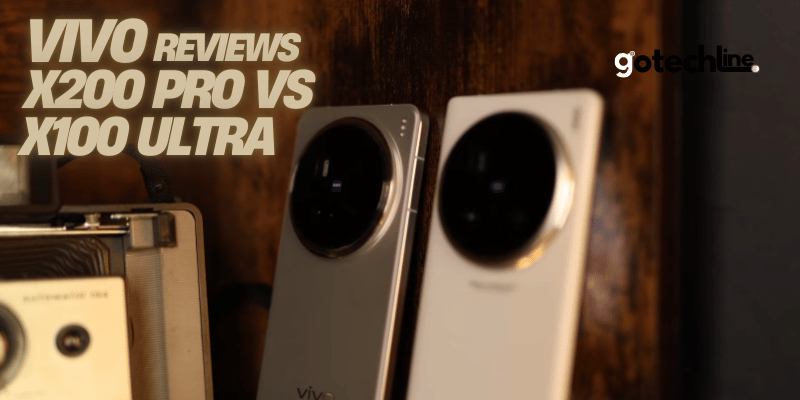In this review, I’ll be comparing two flagship smartphones from Vivo: the Vivo X100 Ultra and the Vivo X200 Pro, focusing on their camera performance.
As a tech enthusiast, I’m excited to compare these two devices, especially considering the advanced camera features they both offer, which can significantly impact photography and videography experiences.
It’s important to note that I performed my tests using 4K 60FPS video on both devices, allowing me to explore various camera features such as image stabilization, color accuracy, portrait mode, optical zoom, and selfie capabilities.
Let’s dive in and see how these two perform in various real-world scenarios.
Camera Specifications of Vivo X100 Ultra vs Vivo X200 Pro
Before diving into practical testing, let’s first take a look at the camera specifications of these two phones.
Vivo X100 Ultra
- Main Camera: 50 MP with a larger sensor for capturing more light and details.
- Telephoto Lens: Optical zoom up to 3.7x, offering better long-distance photo quality.
- Selfie Camera: 32 MP with an f/2.0 aperture and 4K 30FPS video recording capability.
- Stabilization: Dual image stabilization for smoother photos and videos.
Vivo X200 Pro
- Main Camera: 50 MP sensor, slightly smaller than the X100 Ultra’s, but still offers excellent photo quality.
- Telephoto Lens: Zoom capabilities up to 135mm (3x optical zoom), providing a longer reach for distant subjects.
- Selfie Camera: 16 MP with Dolby Vision, which enhances lighting and color for better selfies.
- Stabilization: Optical image stabilization for smooth video recording.
Image Quality and Color Accuracy
One of the first noticeable differences is the color accuracy of photos taken by both devices. When testing the main camera, I found that Vivo X200 Pro produces more natural and true-to-life colors. Skin tones appear more realistic, with balanced contrast.
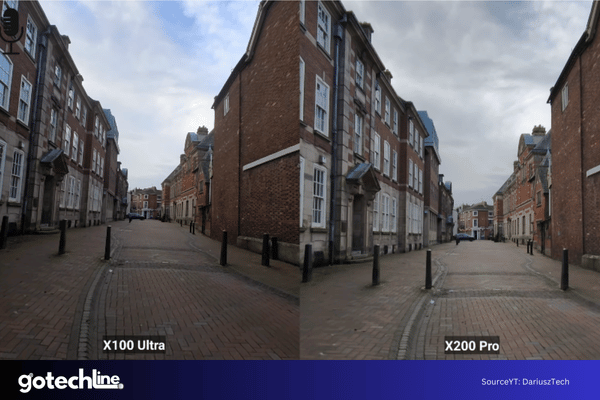
On the other hand, Vivo X100 Ultra tends to produce cooler tones and higher contrast, which may appeal to some users but may look a bit exaggerated for others.
In low-light conditions, however, Vivo X100 Ultra has the upper hand, thanks to its larger sensor.
This allows it to capture more light and detail, making it better for night photography, whereas Vivo X200 Pro shows more noise in low-light shots.
Video Stabilization and Portrait Video Mode
When testing video stabilization, I was highly impressed by the performance of Vivo X100 Ultra. Recording in 4K 60FPS, the camera produced very stable footage even when I was moving or walking around.
This is a crucial feature for content creators who often shoot videos on the go.
On the other hand, Vivo X200 Pro also delivers stable video, but its stabilization isn’t quite as smooth as the X100 Ultra, especially during rapid movements. That said, the video quality on Vivo X200 Pro is still excellent, with crisp details.
Switching to portrait video mode, I felt that Vivo X100 Ultra excelled in this area. While both phones offer portrait video, X100 Ultra provides sharper results with a more natural background blur, making it the better choice for video portraits.
Zoom Performance and Macro Mode
Next, I tested the zoom capabilities on both phones. Vivo X100 Ultra features a 3.7x optical zoom, allowing me to capture distant subjects with great clarity.

When pushing the zoom to its maximum, I could clearly see the difference in quality between Vivo X100 Ultra and Vivo X200 Pro.
The X100 Ultra produced sharper, more detailed images, while the X200 Pro lost some clarity when zoomed in fully.
In terms of macro photography, both devices perform admirably, but I felt that X100 Ultra had the edge in terms of sharpness and detail when capturing small objects.
Selfie Quality and Dolby Vision
One of the standout features of the Vivo X200 Pro is its Dolby Vision support for the front-facing camera. This adds a layer of enhancement, improving lighting and color contrast for a more vibrant selfie experience.
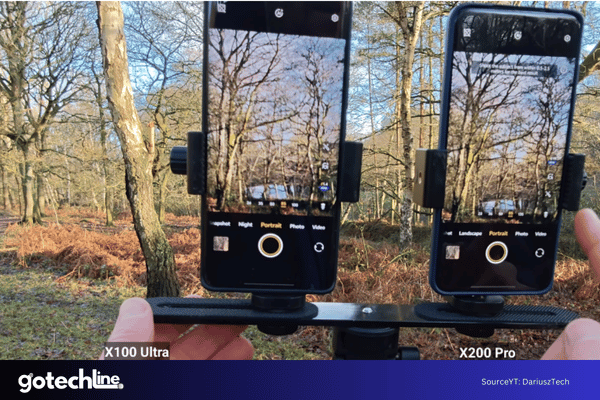
While Dolby Vision is a great addition, I found that Vivo X100 Ultra produces better overall selfie quality, thanks to its larger front-facing sensor and superior low-light performance.
During my 4K 60FPS selfie video tests, I found that Vivo X100 Ultra produced more even lighting, sharper details, and better overall image quality compared to Vivo X200 Pro.
Camera Features and Additional Modes
Both devices come with a variety of camera modes, but Vivo X100 Ultra stands out for offering more versatile features.
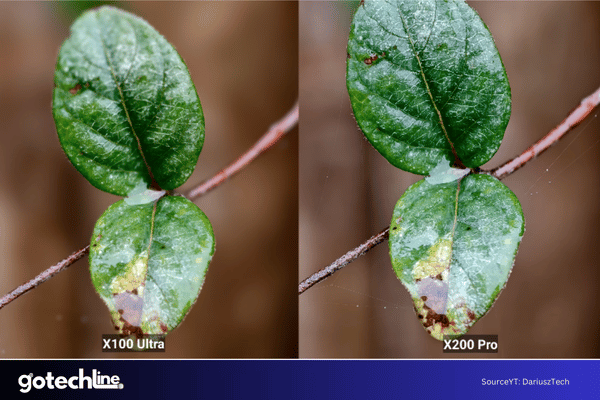
For example, X100 Ultra includes Super Moon, 3D Multi Camera, and Landscape Photography modes, providing users with more options to experiment with different types of shots.
Meanwhile, Vivo X200 Pro is more focused on core camera features like Night Mode, Cinematic Portrait, and Portrait Video, which are still very useful for most users.
However, I feel that X100 Ultra provides more flexibility and creative freedom with its additional camera modes.
One key difference between the two phones is that Vivo X200 Pro offers Log Mode for more advanced color grading, which can be useful for professional videographers.
While X100 Ultra also offers a Log Mode, it is limited to the main sensor, whereas the X200 Pro allows Log Mode on all lenses, giving it an advantage for more versatile video recording.
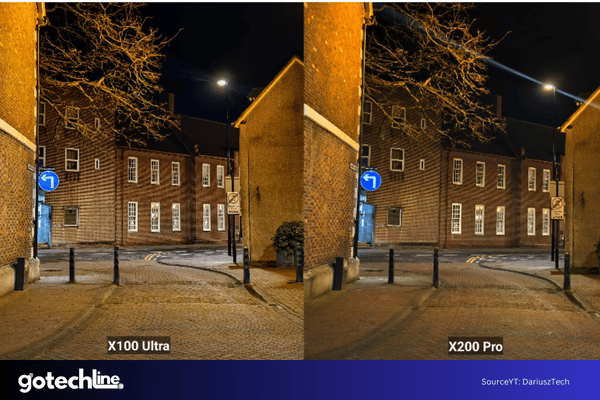
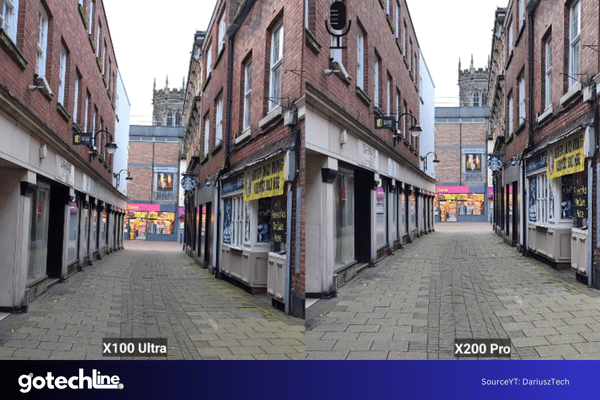
Conclusion: Which One is Better?
Overall, Vivo X100 Ultra has a clear advantage in several areas, particularly with its selfie camera, optical zoom, video stabilization, and low-light performance.
The larger sensor in the X100 Ultra allows for more detailed and vibrant photos, making it a better all-around choice for photography and videography.
That said, Vivo X200 Pro is still an excellent device, especially for those who value natural colors in their photos and enjoy creating high-quality selfie videos with Dolby Vision.
While the X200 Pro may not have the same level of flexibility in camera modes and zoom features, it still delivers outstanding image and video quality.
If you prioritize superior selfie performance, video stabilization, and an all-around more versatile camera experience, Vivo X100 Ultra is the better option.
However, if you’re a fan of Dolby Vision and more natural color reproduction, then the Vivo X200 Pro might be the better choice for you.


